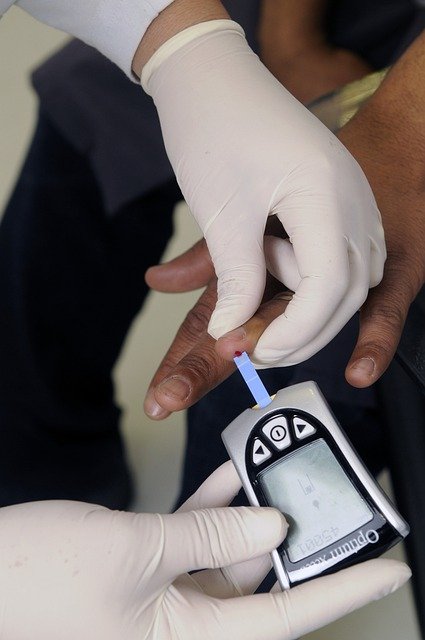Recognizing Early Signs of Prostate Problems: What to Know
Prostate issues, including prostate cancer and benign prostatic hyperplasia (BPH), are common among men, especially as they age. Early detection is crucial for effective treatment and long-term health. Recognizing the first symptoms allows for timely medical care, better outcomes, and improved quality of life. Understanding these warning signs can help men take proactive steps toward protecting their prostate health.

What is difficulty urinating and how does it relate to prostate problems?
Difficulty urinating is often one of the earliest and most common signs of prostate problems. As the prostate gland enlarges, it can put pressure on the urethra, making it challenging to start or maintain a steady urine flow. Men may experience hesitancy when trying to urinate, feeling like they need to strain or push to begin the flow. This difficulty can be particularly noticeable in the morning or after long periods without urinating. While not always indicative of cancer, this symptom should prompt a visit to a healthcare provider for proper evaluation.
How does frequent nighttime urination manifest in prostate conditions?
Nocturia, or the need to urinate frequently during the night, is another telltale sign of potential prostate issues. As the prostate enlarges, it can interfere with the bladder’s ability to hold urine, leading to more frequent urges to urinate, especially at night. Men with prostate problems may find themselves waking up multiple times to use the bathroom, disrupting their sleep patterns and overall quality of life. While occasional nighttime urination is normal, consistently needing to urinate more than once or twice per night warrants medical attention.
Why is monitoring weak urine flow important for prostate health?
A weak urine stream is a key indicator of potential prostate problems. As the prostate enlarges, it can constrict the urethra, leading to a decrease in the force and caliber of the urine stream. Men may notice that their urine flow is less powerful than before, takes longer to empty the bladder, or stops and starts intermittently. Monitoring changes in urine flow is crucial because it can help detect prostate issues early, allowing for timely intervention and treatment. A weak urine stream can significantly impact quality of life and may lead to complications if left untreated.
How can recognizing blood in urine or semen help in identifying prostate issues?
The presence of blood in urine (hematuria) or semen (hematospermia) can be alarming signs that require immediate medical attention. While these symptoms don’t always indicate prostate cancer, they can be associated with various prostate conditions, including prostatitis (inflammation of the prostate) or BPH. Blood in urine may appear pink, red, or cola-colored, while blood in semen might be noticed after ejaculation. It’s important to note that these symptoms can be intermittent and may not always be visible to the naked eye. Regular check-ups and being attentive to any unusual changes can aid in early detection of prostate problems.
What role does pelvic or lower back pain play in prostate disease diagnosis?
Pelvic or lower back pain can be associated with prostate problems, although it’s not always a primary symptom. In advanced cases of prostate cancer, pain may occur if the cancer has spread to nearby bones or tissues. However, in earlier stages or with non-cancerous conditions like prostatitis, men might experience discomfort or pain in the lower pelvic area, perineum (area between the scrotum and anus), or lower back. This pain can range from a dull ache to sharp, intense discomfort. While not all pelvic or lower back pain is related to prostate issues, persistent or unexplained pain in these areas should be evaluated by a healthcare professional.
How do prostate-specific antigen (PSA) levels factor into early detection?
Prostate-specific antigen (PSA) is a protein produced by the prostate gland. Elevated PSA levels in the blood can be an early indicator of prostate problems, including cancer. Regular PSA testing, especially for men over 50 or those with higher risk factors, plays a crucial role in early detection. However, it’s important to note that PSA levels can be affected by various factors, and not all elevated PSA levels indicate cancer. A gradual rise in PSA over time, rather than a single high reading, is often more indicative of potential issues. Healthcare providers use PSA testing in conjunction with other diagnostic tools, such as digital rectal exams and imaging studies, to assess prostate health comprehensively.
In conclusion, recognizing the early signs of prostate problems is crucial for timely intervention and effective treatment. Difficulty urinating, frequent nighttime urination, weak urine flow, blood in urine or semen, and pelvic or lower back pain are all potential indicators of prostate issues. Regular check-ups, PSA testing, and being attentive to changes in urinary habits are key to maintaining prostate health. Men experiencing any of these symptoms should consult with their healthcare provider promptly for proper evaluation and guidance.
This article is for informational purposes only and should not be considered medical advice. Please consult a qualified healthcare professional for personalized guidance and treatment.




